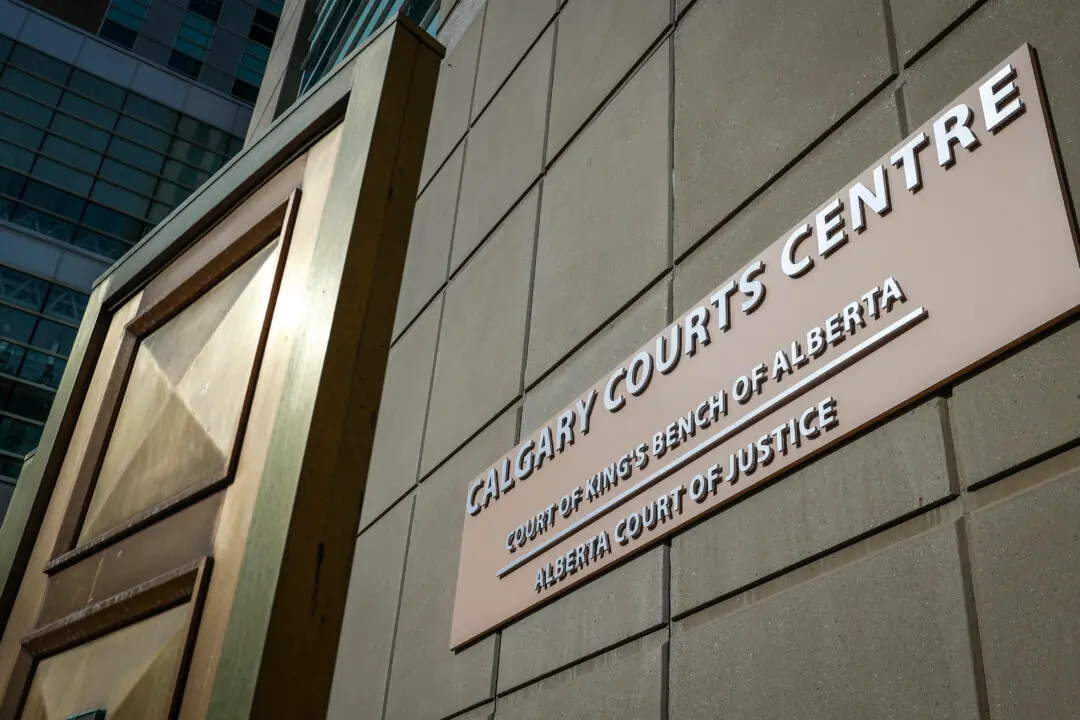OTTAWA—The head of NATO has praised Canada for agreeing to take a leadership role in the standoff with Russia, even as new figures show Canadian defence spending has fallen to record lows.
Ottawa announced last week that Canada would join Germany, the United Kingdom, and the United States in leading a 4,000-strong NATO force in Eastern Europe.
Canadian troops are expected to be deployed to Latvia, where they will make up the majority of a 1,000-strong battalion that will also include forces from other NATO members. Germany, the U.K., and the U.S. will lead similar units in Lithuania, Estonia, and Poland.
The government’s decision came after significant pressure from European and American allies, with U.S. President Barack Obama stating in his address to Parliament on June 29 that “NATO needs more Canada.”
Speaking in Brussels on Monday, July 4, NATO Secretary General Jens Stoltenberg said Canada’s promise to lead one of the four battalions sends a clear signal that the alliance is strong and united.
“This is a great contribution to our common security and a clear signal that our nations will defend one another on both sides of the Atlantic,” Stoltenberg said at a press conference held days before NATO leaders, including Prime Minister Justin Trudeau, were to meet at a summit in Poland starting Thursday.
Even as Stoltenberg was thanking Canada for its leadership in Eastern Europe, new figures produced by the alliance show Canada near the back of the pack in terms of defence spending.
All NATO countries, including Canada, agreed in 2014 to stop cutting military budgets and work toward spending two percent of GDP on defence. The goal was intended to ensure all alliance members were doing their fair share, which includes investing enough to field a modern military.
The target has taken on added importance thanks to Russia’s own military buildup, as well as criticisms in the U.S. from senators and Republican presidential hopeful Donald Trump about some members not pulling their weight.
Obama also gently rebuked Canada in his address to Parliament last week, saying: “As your ally and as your friend, let me say that we'll be more secure when every NATO member, including Canada, contributes its full share to our common security.”
The new figures show Canadian defence spending fell to 0.98 percent of GDP in 2015, the lowest level in decades. While the alliance estimates spending will increase slightly this year, to 0.99 percent of GDP, that will still leave Canada 23rd out of 28 NATO members.
Stoltenberg said while the alliance was moving in the right direction in terms of defence spending after years of decline, there was still a long way to go.
The slight bump in Canadian defence spending this year is a surprise given that in the federal budget the government delayed hundreds of millions of dollars in planned equipment purchases until future years.
Defence Minister Harjit Sajjan’s spokesperson, Jordan Owens, attributed most of the planned increase to the expanded training mission in Iraq as well as about $200 million in new infrastructure upgrades at military facilities across the country.
However, Owens also echoed previous governments in defending the country’s lacklustre record on military spending, noting that Canada has stepped up in other ways. That includes agreeing to lead the NATO force in Eastern Europe, and expanding its fight against the Islamic State.
Stark choices
Stoltenberg said defence spending will be a major point of discussion when NATO leaders gather in Warsaw for the two-day summit.
But Carleton University defence expert Stephen Saideman believes the government’s decision to help NATO in Eastern Europe will get it off the hook.
“Right now NATO is desperate for someone to step up,” he said. “I think standing up while everyone is backing off buys some immunity for Canada.”
However, Saideman said the concern is that Canada will not be able to maintain a capable military over the long term if defence spending doesn’t go up soon.
“There’s going to be some stark choices in terms of what we’re able to do,” he said.
Eastern European NATO members have been clamouring for a bolstered alliance presence in their neighbourhood since Russia seized Crimea and began supporting separatist rebels in eastern Ukraine in early 2014.
Stoltenberg emphasized the deployments were not intended to aggravate Russia.
“NATO does not seek confrontation,” he said. “We don’t want a new Cold War. What we do is proportionate. It’s defensive.”
Russia has nonetheless been critical of the reassurance force, and relations between the two sides have deteriorated to levels not seen since the Iron Curtain fell. Germany’s foreign minister has also accused NATO of “sabre-rattling” with Russia.
From The Canadian Press





